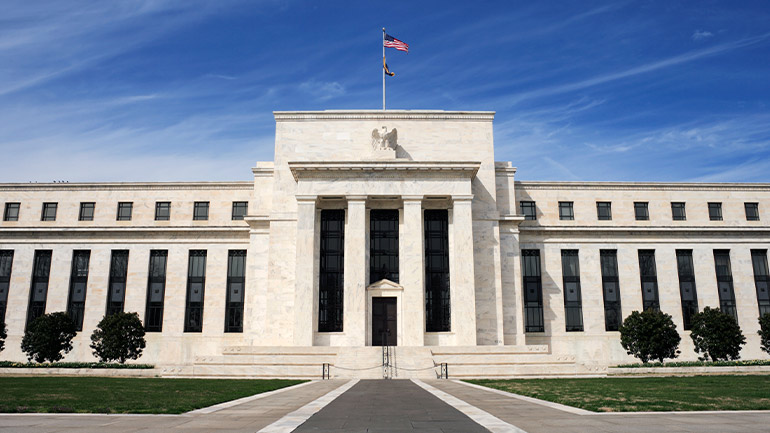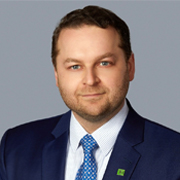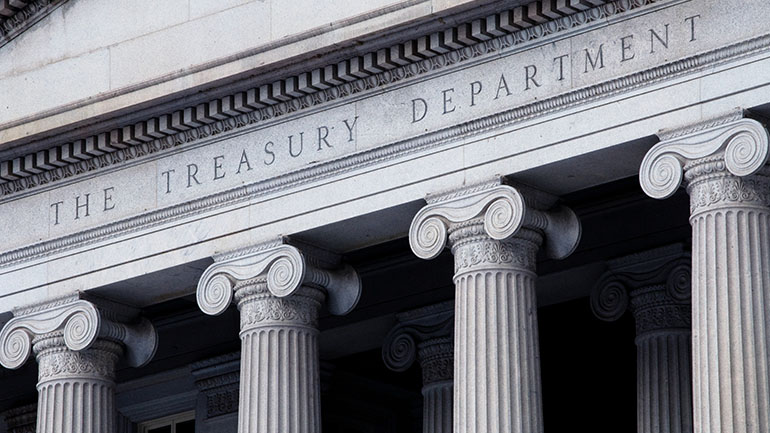September 2024 FOMC: The First Cut Isn't Always the Deepest
By: Oscar Munoz, Gennadiy Goldberg, Molly McGown, Jan Nevruzi, Jayati Bharadwaj
Sep. 13, 2024
The Federal Open Market Committee (FOMC) is widely expected to start its long-awaited easing cycle at its September 18 meeting, with the Committee cutting rates by 25bp to 5.00%-5.25%. While we think a few Fed officials will make the case for beginning the easing cycle at a faster clip, we anticipate the FOMC's first move to be conservative. The dot plot will be the most prominent part of the Fed's guidance, given that it will not only convey what the Committee is planning to do at the November and December meetings, but also how soon the median Fed official is planning to get monetary policy back to a more neutral setting. We expect this to likely be a late-2025 or early-2026 event under their new forecasts.
The Fed's new summary of economic projections (SEP) — particularly the UE rate and core PCE inflation — will also garner close attention as they will provide fresh information about the Committee's reaction function in a world where inflation risks have subsided while those around full employment have risen. Chair Powell's post-meeting press conference will also be instrumental in setting policy expectations. We anticipate his message to be very similar to Jackson Hole's. Our expectation for the Fed's forward guidance is for it to lean broadly dovish.
Looking forward, we expect the FOMC to ease policy with additional 25bp rate cuts in November and December. We also look for the Fed to continue reducing rates by 25bp at each meeting next year until it reaches 3% by October 2025. We forecast the upper end of the Fed funds target range to end 2024 at 4.75% and 2025 at 3.00%.
As we have flagged before, the main risk to our view is that Fed leadership finds itself needing to go back to a neutral stance much sooner than we currently anticipate, as both sides of the mandate are back to or within reach of their steady state. Even if the FOMC decides to kick-start the easing cycle cautiously, Fed officials can accelerate the pace of rate cuts in upcoming meetings. The bar for 50bp cuts after September remains low.
Ratio of Job Openings to Job Seekers Suggests Labor Demand Has Cooled Back to 2018 Levels
Speak Softly and Carry a Big Stick
In our view, the debate surrounding 25bp vs 50bp this month has received too much of the spotlight. And we fear market participants may be missing the forest for the trees. While the FOMC might end up "speaking softly" with a 25bp rate reduction to begin with, it is also likely to "carry a big stick" with its dot plot projections. How you start the policy normalization process can certainly provide a declaration of intentions, but the projected end point of the easing cycle and how you intend to reach it should be more significant signals for the market.
The main reasoning behind our thinking around a more cautious start for the Fed on the 18th is two-fold:
- The August jobs report, while not stellar, did not provide signs of clear deterioration vs July.
- If Fed leadership felt the need to start the easing cycle more bluntly, it had plenty of opportunity to communicate that clearly to the market.
Given current pricing and the Fed's well-known aversion toward unsettling market expectations, the bar is elevated for a 50bp rate cut at this juncture. Leaks to the press should not become a go-to communication tool.
Fed Dots & the Reaction Function: A New Beginning
More paramount for us will be learning about the Fed's evolving reaction function under shifting risks to the economic outlook, which are now leaning toward softer labor market outcomes. The Fed's new SEP should confirm that most officials anticipate the economy will largely settle back to its steady state by end-2025. The median projection for core PCE inflation will likely be in spitting distance from the 2% objective and the UE rate should be on top of the median's longer-run projection at 4.2% — it already crossed it in July. The main evolution in terms of the economic outlook since the last SEP update in June is that the labor market has softened more rapidly than expected.
A possible obstacle that would lead Fed officials to be more cautious in 2025 is the uncertainty surrounding r* in a post-pandemic world, and the idea of moving more gradually as the Fed observes macro data in real-time to help it detect where neutral is.
Taylor Rules Indicate the Fed Might Be Behind the Curve
Rates Strategy - All in the Details
With markets penciling in 36bp of cuts in September, investors' primary focus will be on the size of the first Fed rate cut and forward guidance about the pace of future cuts. The market is already pricing in significant rate cuts in 2024, 2025, and a terminal rate at just 2.8%. Rates have decreased significantly over the past several months, with nominal rates leading the move lower as TIPS breakevens have fallen sharply. Real rates have nevertheless declined sharply as expectations for the Fed rate cuts have increased significantly.
With little certainty on the path forward for rates, the market will be watching several aspects of the meeting most closely:
- Statement: Assuming a 25bp cut to start, the statement will be parsed for any signs that the Fed is becoming concerned about downside risks to the labor market. If the Fed is not sufficiently dovish, markets could price out some 2024/2025 cuts and push the terminal rate higher.
- SEP: While the Fed will provide 2027 dots for the first time, the main focus for investors will be how far the median dots for 2024 and 2025 dots decrease. With markets already penciling in terminal rate of 2.8%, anything less aggressive may be perceived as a more hawkish Fed path.
- Powell press conference: Investors will be keen to see whether Powell emphasizes the SEP and how much focus he puts on slowing labor market momentum. We generally expect Powell to sound dovish, but to keep an open door about the pace of future cuts.
- Any mention of QT: The Fed views quantitative tightening (QT) as a separate policy, but any indication that faster rate cuts could be coming due to worries about slowing economic growth could open the door to a full stoppage of the program. We currently expect QT to end fully in December.
The market is already going into the FOMC meeting quite dovish. While the Fed is unlikely to suggest that the labor market is deteriorating sharply and is likely to deliver a 25bp cut to start the cycle, we generally expect dovish communication as the Fed undertakes the first cut of the cycle.
FX - Steady as She Goes
We are getting close to the ceiling of Fed pricing for 2024 and 2025. The upper range of Fed pricing for year-end should be around 125bp (one 25, two 50s) and we are at 117bp already. The market is also pricing a terminal rate of 2.8% which is low (we expect the median dot for 2025 to show 3.125%). So, any USD downside from further Fed repricing is limited from. In fact, there is greater scope for USD strength on signs of U.S. data steadying out or the Fed not matching the market's expected rate path.
As always, there is a risk for markets to over-react and swing even further like a pendulum and take the Fed's projection as dovish even though rates/FX are already priced quite dovishly and appear stretched. One thing that can help to limit any massive USD downside is positioning, which is very clean now. Asset managers have wiped out USD longs built over 2024 and options bearishness seems to have peaked.
Once markets move beyond the U.S./Fed, there is enough event risk (geopolitical and political) to help correct the dollar cheapness. Markets have been ignoring U.S. electoral risk where polling margins between the two candidates are tighter than both of the last two elections. We also remain cautious of the market's singular focus on U.S. growth concerns as the rest of the world is also slowing down.
Subscribing clients can read the full report, September FOMC: The First Cut Isn't Always the Deepest, via the TD One Portal















